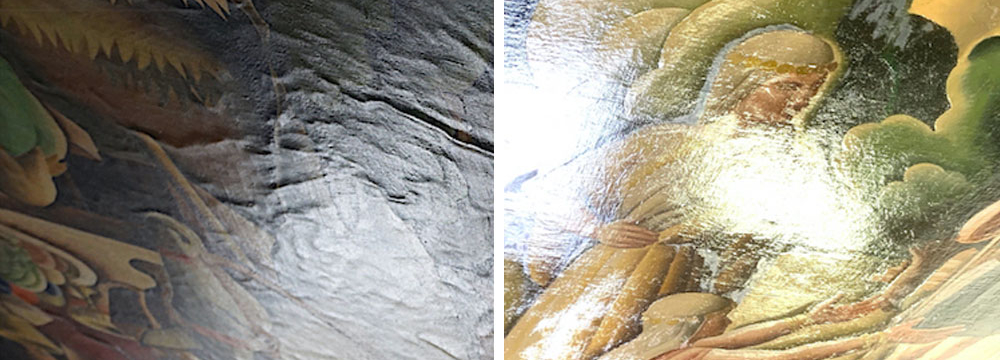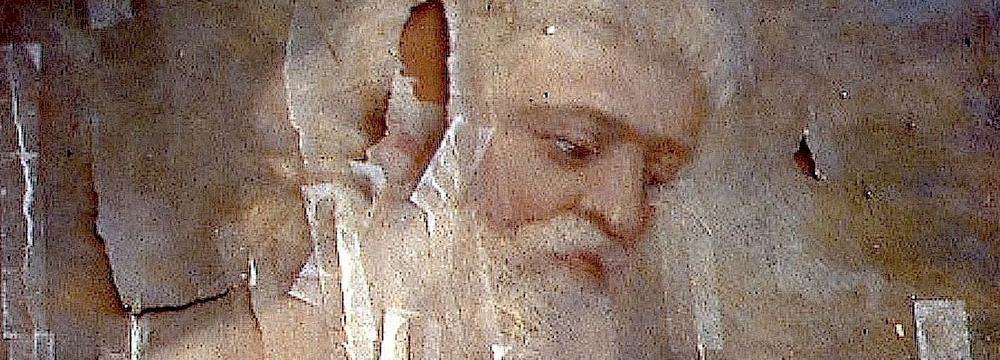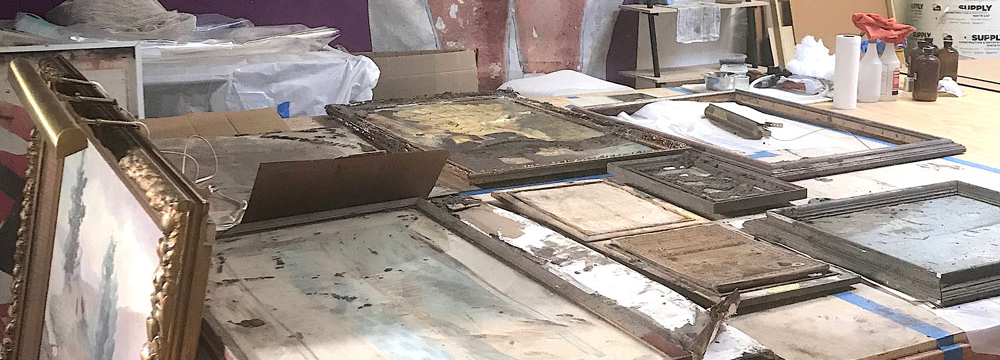Painting restoration and cleaning artwork is the subject of what we suspect is humor from Harvard. The award was reported in “Chemistry World” which has been given out since 1991 called the “Ig® Nobel Prize”, “For achievements that first make people LAUGH then make them THINK”
This year’s chemistry Ig Nobel prize has been awarded for showing that human saliva is a good cleaning agent for paintings and historical artifacts. Its not really a traffic stopping discovery… its been part of the restoration processes, probably, for millennia.
The three Portuguese conservation scientists, Paula Romão, Adília Alarcão and César Viana’s showed in their 1990 paperhow they measured saliva’s effectiveness at removing dirt from antique gilded sculptures. They acknowledged that saliva is often used as a cleaning solvent when working with delicate materials such as gold leaf and ceramics. It si also used for many other artifacts including paintings.
“I know that it seems quite improbable, but human saliva is indeed an effective cleaning agent for surfaces like paintings, sculptures and gilded wood. But don’t try to use it on your kitchen counters,” Romão said in an acceptance video that was played at the awards ceremony at Harvard University. “The cleaning action is in part due to an enzyme in saliva, α-amylase, which breaks down starch into simple sugars.”
The photographs show Painting Conservator Oriana Monemurro, who has discovered through small sampling tests, that that the gray on the painting is most safely removed with saliva, especially in the areas of the flowers which seem to be the most sensitive to cleaning.
The ancient Roman, Plini the Elder, philosopher, art historian is reported to have declared that more works of art have been damaged by inept over-aggressive cleaning that all the floods, fires, volcanoes and earthquakes in the history of the world. He was well acquainted with disasters; he died in a pyroclastic ocean surge while trying to rescue friends from the erupting of Vesuvius in 79 ad. Saliva would have been a welcomed and acceptable safe method of cleaning to Plini.
More interesting research taking up the time of Harvard research students and perhaps their grant monies, theIg Nobel Prizesare awarded annually to celebrate improbable scientific research across a variety of disciplines. Among this year’s winners are Marc Mitchell and David Wartinger, who were awarded the medicine prize for using roller coaster rides to hasten the passage of kidney stones, and an international team who won the biology prize for demonstrating that wine experts can smell the presence of a single fly in a glass of wine.
For interesting short painting restoration videos of stories and processes click here for the YouTube channel of Fine Art Conservation Laboratories.
Questions? Call Art Conservators Oriana Montemurro, Virginia Panizzon, Scott M. Haskins at 805 564 3438 faclartdoc@gmail.com














“Fake spit” is available from conservation suppliers:https://www.ctseurope.com/scheda-prodotto.php?id=483 This site is in Italian but you can switch to English at the top of the page.
I’m laughing ♀️… I think my friend hasn’t seen the photo that her boss made. It’s great!
Yea, I assume the intellectuals at Harvard are hard pressed for humor.
Someone at Harvard doesn’t have enough to do. It’s a shame that they are probably salaried or spending their grant monies…
Does Oriana know about this pic?!!! It is hillarious! And plus, saliva is organic – sustainable and green. What else?
Why not just use water? What happens if you run out of spit?! LOL!
Georgeanna, plan water doesn’t have enzymes and other useful elements that dissolve grime and crud better than water.
Funny comments aside, does saliva have a place in your cleaning efforts?
Kirstin, yes! Its the least impactful of the cleaning solvents so when we test, we start with that. If it works to remove the grime, then we formulate a “fake spit” to use on the artwork. If the painting is large or if its small, we clean it with natural saliva. But, as you can imagine, saliva doesn’t take off oily grime, varnishes, old retouching etc.
Kirsten, Yes, I use saliva often to start my testing process… then move on to other choices. I also use saliva often to “clear” or neutralize other solvents. Its very useful.
Do you use one Q Tip for the entire painting?!
LOL!!! Pauline, do you mean do we constantly put the dirty Q Tip back in our mouths?!?!
You’ve got to be kidding me…
LOL! Its seems an odd thing to use on a work of art but its safe to use on oil paintings.
Its seems funny to me that this subject would even come up, its so common place. Infact, Magical spit! Used it just yesterday!